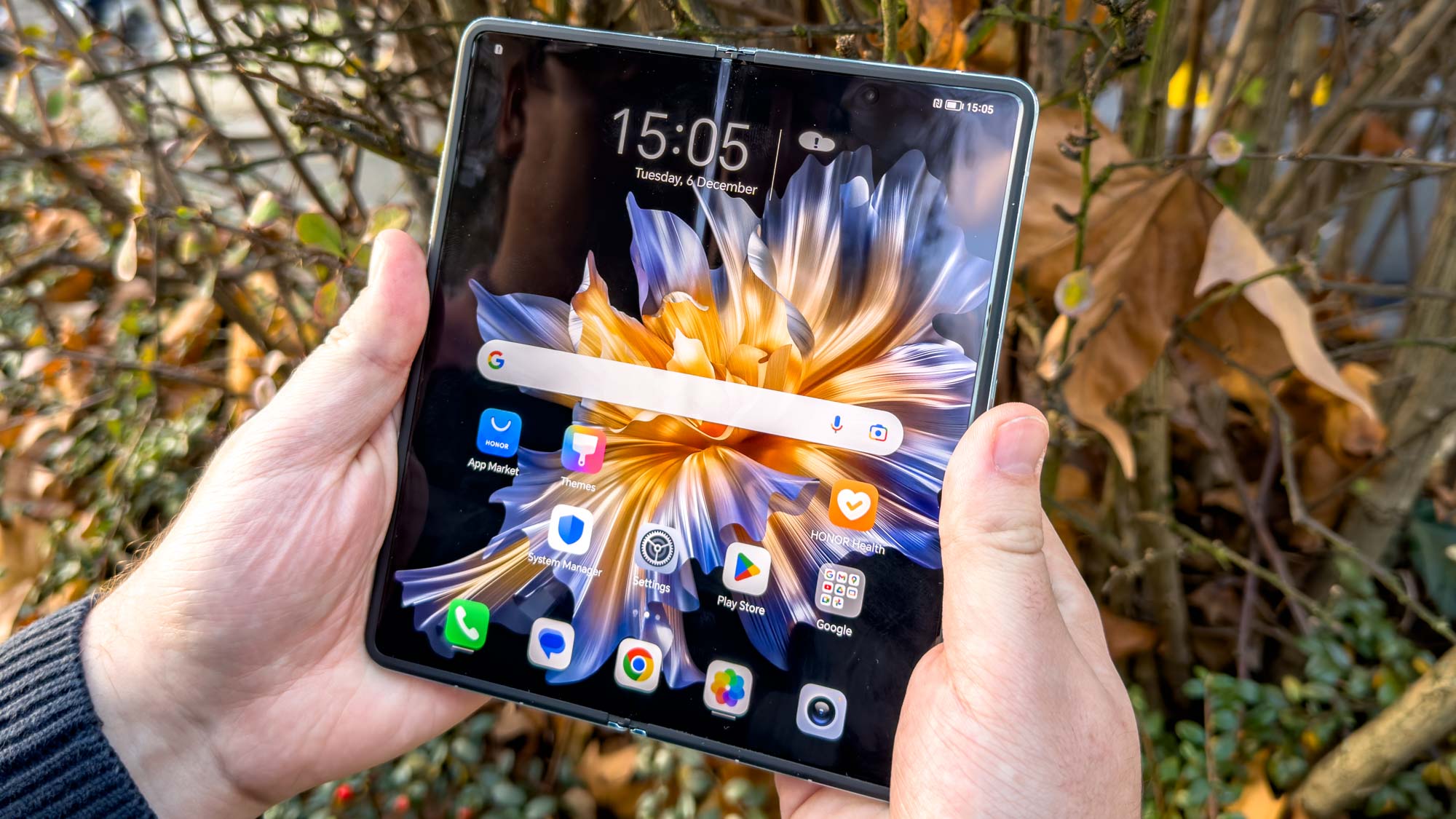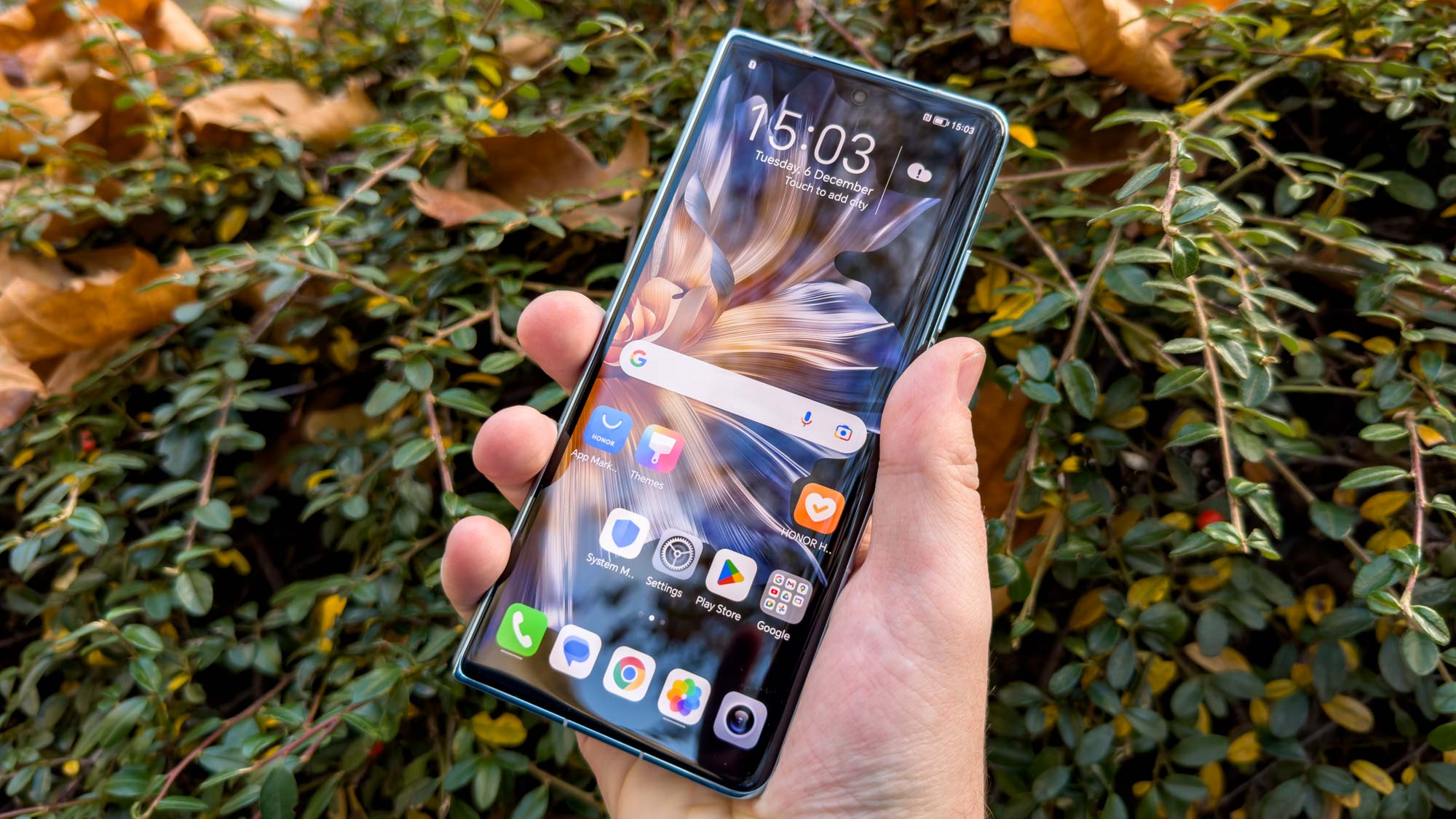This foldable phone could be the best of 2023 — and it’s not from Samsung
The Honor Magic Vs shows Samsung a thing or two when it comes to foldable phone design

You don't even need to take the Honor Magic Vs out of your pocket to know it's a better-designed foldable phone than the Samsung Galaxy Z Fold 4. I carry a Z Fold 4 around on a daily basis, and because of its uniquely narrow but thick profile when folded, it's unmistakable for any other phone. The Magic Vs however, despite its folding design, is nearly indistinguishable from the iPhone in my other pocket. And it's this more refined design that was the core of the phone's appeal during my testing.
To get some key caveats out there before we continue, I tested a pre-production version of the Honor Magic Vs, the sequel to this year’s original Magic V foldable. As a result, I can't talk about any software-related features since they could change before launch. It's currently announced for China, but it is promised to launch globally (although likely not in the U.S) in 2023. The fact we'll at least be able to buy this in the U.K. would be a good thing because it could become part of a new vanguard of foldable devices that will finally give Samsung some competition.

Design: The Magic Vs' killer feature
Going back to the Magic Vs' design, it's impressively slim and light considering it can open up to 7.9 inches. As I mentioned above, when it's shut, it's barely bigger than my iPhone 14 Pro Max with a case on it, and only weighs a little more at 9.2 ounces. The Galaxy Z Fold 4 still opens to an impressive 7.6 inches, but weighs a touch more at 9.3 ounces. It's also a lot thicker, measuring 15.8mm (0.6 inches) at its thickest point when shut compared to the Magic Vs' 12.9mm (0.5 inches).

The Z Fold 4's thickness is in part due to the fact it doesn't close flush, with a small gap between the two halves of the display easily visible at the hinge end of the phone. That's unlike the Magic Vs which is able to shut fully.

Plus, it manages to do that while still having a less prominent crease down the display, something Honor attributes to its hinge design.

What's better than the inner display though is the outer display. It's a 6.45-inch panel with a 21:9 aspect ratio, making it basically the same size as a mid-sized Android phone like a Google Pixel 7 or Galaxy S22. Although the Galaxy Z Fold 4's 6.2-inch cover screen has Samsung's most usable cover display yet, it's not in the same league as what Honor has here, which is an outer display that you could comfortably use all day without unfolding it.

The Magic Vs' outer screen is also curved on one side which makes it easier to use one-handed, even if it does mean the phone is even more obviously asymmetrical when closed. That's not the only unusual design touch, since the volume rocker is placed on the left side of the unfolded phone. It means when you're trying to adjust the volume with the phone closed, it's not on the same plane as the power button, which is confusing after over a decade of using phones with a single side and a single line of buttons.
Hardware advantages — and a few disadvantages
There are a couple of other ways that the Magic Vs excels, but that I couldn't test properly. First off are its cameras, which consist of 54MP main, 50MP ultrawide and 8MP 3x telephoto cameras on the back and a 16MP selfie camera on the cover display.
There's no inner camera like the Galaxy Z Fold 4 has, but the quality of Samsung's under-display camera is pretty poor and is therefore hardly a killer feature. And while the Galaxy Z Fold 4 does have a slightly higher resolution 10MP telephoto camera, its cover selfie and ultrawide cameras have fewer megapixels than the equivalents on the Honor.

Then there's the Magic Vs' 5,000 mAh battery, which is as large as you'd find in a regular phone like the Galaxy S22 Ultra. The Galaxy Z Fold 4 has a 4,400 mAh cell, which could mean the Honor beats it with ease on a battery life test.
In some ways, Samsung has still got a hardware advantage that makes the Galaxy Z Fold 4 more versatile. It’s compatible with a stylus for one, which lets the inner display act even more like a tablet and adds a lot of much-needed extra versatility for the price.

There’s also no Flex Mode equivalent on the Magic Vs, something I found I missed. The Honor foldable wants to spring open or shut depending on how far you've opened it, while the Galaxy Z Fold can open to near enough any intermediate angle. That lets you open the phone partially to stand it up to watch video or take more stable photos, and is something that feels like it should be a standard feature on most foldables.
Honor Magic Vs: Outlook
On the whole, I have high hopes for the final version of the Honor Magic Vs. There’s a strong chance it’ll be one of the best foldables when it launches, but without knowing how well it takes photos, plays games or performs other real-life tasks, it’s hard to know if it will hold that status for long. Also, the presumed lack of U.S. availability would mean it won't beat its rivals no matter how good it is.

2023 is shaping up to be a big year for foldable phones. We'll most likely get a Galaxy Z Fold 5 and Galaxy Z Flip 5 midway through the year, which rumors claim could be the first big revamps of these phone lines in years. We’re also hearing that the Google Pixel Fold could break cover in early 2023, which could offer a fresh take on foldables thanks to the company's focus on photography and software smarts. The Honor Magic Vs has good bones, but it'll need more to stand atop the foldable phones heap.
Sign up to get the BEST of Tom's Guide direct to your inbox.
Get instant access to breaking news, the hottest reviews, great deals and helpful tips.

Richard is based in London, covering news, reviews and how-tos for phones, tablets, gaming, and whatever else people need advice on. Following on from his MA in Magazine Journalism at the University of Sheffield, he's also written for WIRED U.K., The Register and Creative Bloq. When not at work, he's likely thinking about how to brew the perfect cup of specialty coffee.
